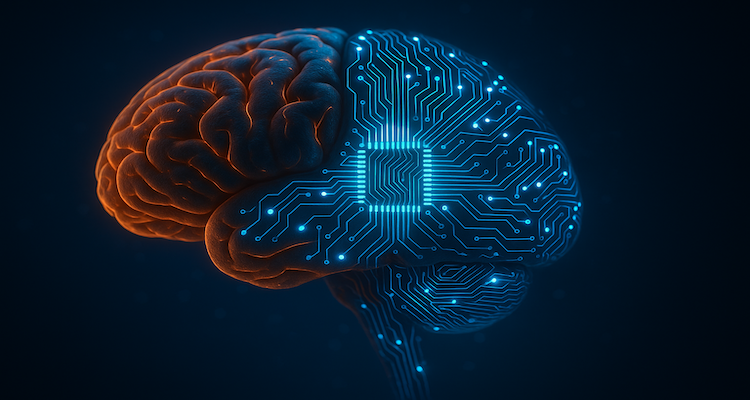AI’s Double Edge: Breakthrough or Economic Bubble?
Artificial Intelligence is redefining industries and inflating markets, creating both genuine breakthroughs and speculative risks. Here’s why both can be true.
The Paradox of Progress
Artificial Intelligence (AI) has become the defining technology of our time, a revolution reshaping creativity, communication, and commerce. From chatbots that write essays to algorithms that design medicines, AI’s influence is everywhere.
But as investment in AI skyrockets and companies reach record valuations, a pressing question looms: is AI a lasting breakthrough, or a bubble driven by hype?
Many analysts suggest the truth may lie somewhere in between. The technology’s long-term potential is undeniable, yet its short-term economic frenzy resembles past speculative booms.
Learning from Past Tech Waves
To understand AI’s current momentum, it helps to revisit history’s innovation cycles. The 1990s dot-com era promised an internet-powered future but ended in a dramatic crash when expectations far outpaced reality. Similarly, the cryptocurrency rush of the 2010s turned blockchain enthusiasm into an investment bubble before stabilizing into practical use cases.
AI is built on a stronger foundation. It stems from decades of research in machine learning, computer vision, and natural language processing. The rapid advancement of computing power and cloud infrastructure has enabled what was once theoretical to become commercial reality.
Still, history warns that even transformative technologies can be overvalued when excitement outpaces real productivity. AI might change everything, but not as quickly or evenly as markets expect.
Innovation Meets Investor Mania
Over the past two years, AI development has accelerated faster than any modern technology cycle. Investment in AI startups topped $80 billion globally in 2024, as tech giants and venture capitalists raced to claim the next frontier.
Companies such as OpenAI, Google, Anthropic, and Meta are in a race to create smarter, safer, and more profitable AI systems. At the hardware level, NVIDIA’s dominance in AI chips has made it one of the world’s most valuable companies, symbolizing how infrastructure providers benefit first from the boom.
However, this explosive growth has also drawn comparisons to speculative bubbles. Some AI startups have secured billion-dollar valuations with minimal revenue, while businesses across industries are rebranding themselves as “AI-powered” to attract investor interest.
This combination of real innovation and financial exuberance echoes a familiar cycle, rapid expansion followed by inevitable correction.
Excitement and Unease
AI’s influence extends far beyond the financial markets. For consumers and workers, the technology inspires both fascination and fear.
Supporters hail AI as a democratizing force, one that automates tedious tasks, enhances creativity, and makes advanced tools accessible to anyone with an internet connection.
At the same time, many professionals express anxiety over automation and job displacement. Creative workers, writers, artists, and musicians, worry about being replaced or having their intellectual property used to train AI models. In sectors like healthcare and education, ethical questions are intensifying around bias, privacy, and accountability.
Social media reflects this divide: while one corner celebrates AI-generated art, music, and text as signs of limitless innovation, another warns that such technology could erode authenticity and human value.
A Fork in the Digital Future
The next few years will determine whether AI becomes an enduring pillar of progress or another inflated trend. If overinvestment leads to unprofitable returns, the industry may experience a correction similar to the dot-com crash, temporary but necessary.
On the other hand, the long-term transformation AI promises is already unfolding. Industries are seeing tangible efficiency gains through automation and predictive analytics. Healthcare systems use AI for early disease detection; logistics companies rely on it to optimize supply chains; educators are experimenting with personalized learning powered by adaptive algorithms.
Governments are taking notice. The European Union’s AI Act, U.S. regulatory frameworks, and Asia’s national AI strategies all aim to balance innovation with oversight. These policies could help prevent a reckless bubble and guide AI’s growth toward sustainable impact.
Ultimately, the “AI economy” may resemble past revolutions: a volatile early phase of excitement and correction that eventually matures into an indispensable infrastructure for society.
A Bubble Worth Building Through
AI represents the dual nature of progress, bold ambition intertwined with inevitable correction. Every transformative technology, from electricity to the internet, has endured cycles of hype before stabilizing into everyday utility.
Artificial Intelligence is following the same path. The speculation may burst some illusions, but the innovation will endure. Whether it’s called a bubble or a breakthrough, AI is shaping the next chapter of human development, testing not just our technology, but our capacity to use it wisely.
(Disclaimer: This article is based on publicly available data, market reports, and policy developments. It is for informational purposes only and does not constitute financial advice.)
ALSO READ: Android 16 Unlocks Smarter, Simpler, and More Connected Living










